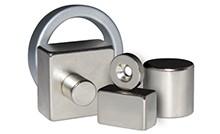When it comes to strength and versatility, rare earth magnets stand in a league of their own. You may not see them, but these small yet mighty magnets power countless devices in our everyday lives—from headphones and electric cars to MRI machines and wind turbines. But what exactly makes rare earth magnets so special, and why are they so powerful? Let’s break it down in simple terms.
What Are Rare Earth Magnets?
Rare earth magnets are a type of permanent magnet made from alloys of rare earth elements—specifically neodymium or samarium. Despite the name, these elements aren’t necessarily rare in terms of availability. They’re called “rare” because they’re typically found dispersed in the earth’s crust and are difficult to mine economically.
There are two main types of rare earth magnets:
- Neodymium Iron Boron (NdFeB): Known for being the strongest type of permanent magnet available.
- Samarium Cobalt (SmCo): Slightly less powerful than neodymium but more stable at high temperatures and resistant to corrosion.
If you’re curious to explore more about rare earth elements.
Why Are They So Powerful?
Rare earth magnets owe their incredible strength to the unique structure of their atomic makeup. The unpaired electrons in rare earth elements create a strong magnetic field, which allows these magnets to produce significantly more magnetic force than ceramic or alnico magnets of the same size.
To put it in perspective: a neodymium magnet the size of a coin can hold up to 1,000 times its own weight. This magnetic force makes it possible to create compact devices with greater efficiency and performance.
Where Are Rare Earth Magnets Used?
Thanks to their strength and reliability, rare earth magnets are used in a wide range of industries, including:
- Consumer electronics: Earbuds, smartphones, hard drives
- Medical devices: MRI machines, surgical instruments
- Automotive: Electric vehicle motors, sensors
- Green energy: Wind turbine generators
- Industrial applications: Magnetic separators, robotics, magnetic tools
Their lightweight and high-performance characteristics make them especially important in modern, compact designs where space and efficiency are key.
Advantages Over Traditional Magnets
- Compact size: Smaller magnets with stronger force
- Durability: Long-lasting magnetic performance
- Versatility: Suitable for a wide range of temperatures and environments
- Energy efficiency: Reduces power usage in motors and generators
Are There Any Downsides?
While rare earth magnets are incredibly useful, they can be brittle and prone to corrosion (especially neodymium). They also require careful handling because of their strength—they can snap together forcefully and cause injury or damage if not used properly. Additionally, mining and refining rare earth elements come with environmental concerns, making recycling and sustainable sourcing increasingly important.
Final Thoughts
Rare earth magnets may be small in size, but their impact is massive. From revolutionizing the way our gadgets work to enabling advancements in clean energy, they play a crucial role in today’s technology-driven world. As innovation continues, the demand for powerful and compact magnetic solutions like rare earth magnets will only grow stronger.










